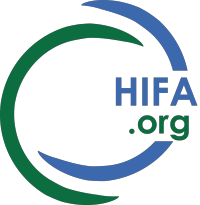We are very pleased to launch our HIV and AIDS poster!
https://www.childrenforhealth.org/HIV&AIDSposter
This has been a very interesting process involving several experts and practitioners across the world. Members of this network helped us too. It took many months of careful adjustments and review. The resulting set of messages for children to learn and share are an update and upgrade from our first edition published in 2014.
Also click here for more on how we developed it with teachers and children in Eswatini, photos of some of the team there and about the Children for Health storybook on HIV & AIDS that is to come!
https://www.childrenforhealth.org/news/new-hiv-aids-poster-launch/
Here are the 10 messages for children to learn and share on HIV & AIDS and please download the two-sided full colour poster at this link and share it with your networks. The poster is designed to be printed A3 size (minimum)
https://www.childrenforhealth.org/HIV&AIDSposter
1. Our body is amazing. We have an immune system, and this protects us from germs that cause diseases.
2. Human Immunodeficiency Virus (HIV) is a virus that weakens our immune system and stops our bodies protecting us well from everyday germs. IF HIV is not treated, it can lead to AIDS (Acquired Immuno Deficiency Syndrome).
3. HIV lives in the blood and other bodily fluids and is invisible to the eye. It can be passed on (1) through sex (2) from HIV positive mothers to their babies during pregnancy, delivery or breastfeeding (3) in needles or syringes, and (4) through a blood transfusion.
4. Medicines called AntiRetroVirals (ARV’s) keep HIV levels low so a person can live a long time. ARV’s prevent the spread of the virus to others.
5. Children with HIV need strong support from their family, friends and teachers and encouragement to keep going with their medication to stay healthy.
6. People with HIV can play, share food and drink, hold hands, kiss and hug other people. People do not pass on the virus this way.
7. A medicine called PrEP (Pre-Exposure Prophylaxis) helps protect people who are at risk of getting HIV.
8. People protect themselves from getting HIV from sex by (1) having sex using condoms (protected sex) (2) being in a sexual relationship where both partners are HIV negative and do not have sex with others. (3) taking Pre-Exposure Prophylaxis (PrEP).
9. To help themselves and others, adults who think they may have HIV can do a simple test at a clinic or with a self-test at home.
10. Pregnant women should be tested for HIV at the antenatal clinic. If positive, they should get treatment to keep them healthy and stop HIV passing to their baby during pregnancy delivery and breastfeeding
A school in Eswatini co-created this poster by workshopping the messages and the artwork. The children have also participated in workshops to reflect on their knowledge and the myths around HIV. They have developed stories about how they have been affected by HIV and AIDS in their families and among their friends. We are using these ideas to develop a new Children for Health storybook on the topic.
https://www.childrenforhealth.org/HIV&AIDSposter
HIFA profile: Clare Hanbury is director of Children for Health. She qualified as a teacher in the UK and then worked in schools in Kenya and Hong Kong. After an MA in Education in Developing Countries and for many years, Clare worked for The Child-to-Child Trust based at the University of London's Institute of Education where, alongside Hugh Hawes and Professor David Morley she worked to help embed the Child-to-Child ideas of children's participation in health – into government and non-government cchild health and education programmes in numerous countries. Clare has worked with these ideas alongside vulnerable groups of children such as refugees and street children. Since her MSc in International Maternal and Child Health, Clare focused on helping government and non-government programmes to design and deliver child-centered health and education programmes where children are active participants. Clare has worked in many countries in East and Southern Africa and in Pakistan, Cambodia and the Yemen. In July 2013, Clare founded the NGO, Children for Health and develops health education materials and and works on health education programmes alongside partners all over the world. Clare is a member of the HIFA Working Group on Information for Citizens, Parents and Children and the CHIFA (child health and rights) Steering Group.
https://www.hifa.org/support/members/clare
http://www.hifa.org/projects/citizens-parents-and-children
Email: clare.hanbury AT zen.co.uk

